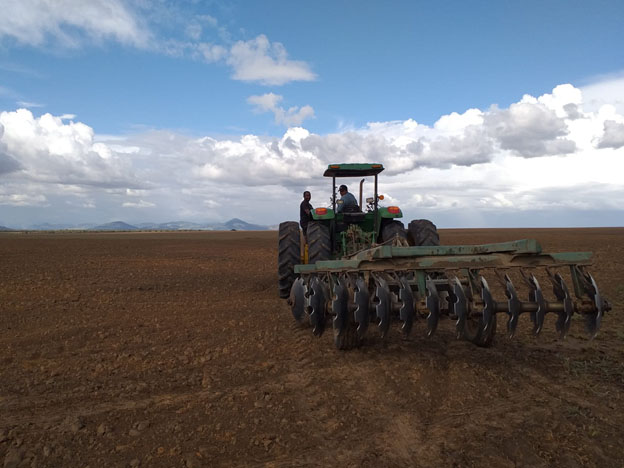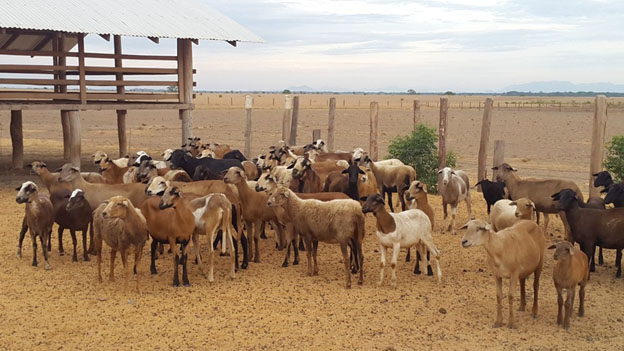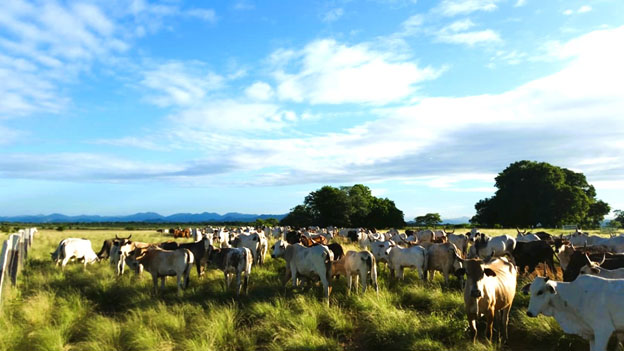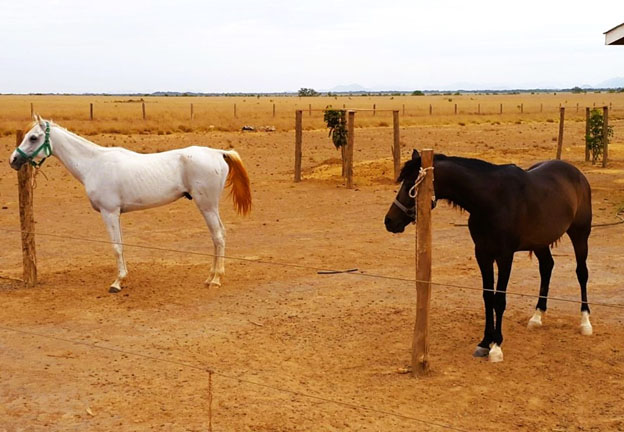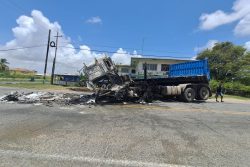After being hard hit by the COVID-19 pandemic and the resultant constriction of the global supply chain, the Region Nine Santa Fe Farm is preparing to resume work with its eyes set on assisting Guyana to cut its food imports by 2025, Farm Director Eldon Bremner said.
The decision to restart was taken last year following a visit by President Irfaan Ali and several Caricom Heads of State and the company has prepared some 600 acres of land for the planting of soybeans and corn next month.
“Following the Inaugural CARICOM Agri-Investment Forum and Expo which was held in Guyana in May of 2022, and a visit to Santa Fe Farms by His Excellency Dr. Irfaan Ali and other Caricom Heads of State, Santa Fe Farm made a decision to become involved in the push to reduce the food import bill in the Region by 25 per cent by 2025,” Bremner told the Sunday Stabroek in an interview on Friday.
“Land preparation is completed for the planting of approximately 600 acres of soya beans and corn in April 2023 and upon successful harvest completion, it is intended to move to large scale production,” he added.
The farm, he disclosed, “has embarked on the next phase of its business plan, with the planting of soybeans and corn, and increasing its production of other crops of cassava, sweet potatoes, bananas, coconuts, watermelon, passion fruit and cash crops.”
The project, founded by prominent Barbadian investor, Sir Kyffin Simpson in 2011 has seen the transformation of thousands of acres of land.
Santa Fe Farm has successfully grown and exported over 12,000 tons of paddy to Brazil, in what was a pioneering project for the region but was forced to scale back on production in 2020 because of the COVID pandemic.
In 2021, during a visit by Minister of Agriculture Zulfikar Mustapha, Santa Fe Farm announced that it would be increasing output in a phased manner.
“We currently have 29,000 acres of land being utilised for agricultural purposes. We do livestock, crops, and aquaculture. We currently have a variety of orchard crops and other fruits like watermelons, peanuts, cassava, papaw, tomatoes, ochro, and pineapples under cultivation. We also cultivate a number of vegetables and seasonings like shallot,” it’s General Manager, Yolanda Vasconcellos had said.
“We also have improved pastures as well as 8000 acres for rice. We also have a growing cattle herd. So far, we have 460 animals. We’ve imported several breeding bulls like the Texas Long Horn and so on. That is to improve the breeds within the communities here. We’ve also done that with the Arabian Horses. They breed with the local animals and have adapted well to the climatic conditions here. We can also process corn so that’s another crop that we propose to get into,” she added.
Vasconcellos had also pointed out that the current global pandemic had negatively impacted trade to some extent, especially with Brazil. She noted that access to markets before the COVID-19 outbreak had also been difficult at times due to transportation issues during the rainy season.
“Last year we had to scale down on production because of lack of markets because of COVID but that was across the globe. We’ve since been able to resume our regular cultivation but in phases,” Vasconcellos said.
Back in 2010, the government signed a memorandum of understanding (MoU) with ITC Barbados for the development of a large-scale integrated agricultural crops and livestock project. Phase one called for the lease of 100,000 acres of land to the investor with a minimum investment of US$5 million, the Ministry of Agriculture had informed.
Mustapha, during his visit then, had announced that his Ministry would be working to resuscitate rice cultivation at the farm.
The Minister of Agriculture noted that government was able to increase its quota for rice being shipped to Brazil through Guyana’s current bilateral trade pact-Partial Scope Agreement. He added that with Santa Fe Farm being located closer to Brazil, it would be economically viable to restart cultivation there.
Upland rice
“Santa Fe has a rice mill and thousands of acres specifically for rice cultivation. In the past, the farm was able to produce rice which was sold to Brazil. This was done through upland rice cultivation which is a system that our neighbours in Brazil, who have a similar soil, have been able to enjoy over 30 years of success in this type of cultivation,” he said.
Further, he added, “I was told that irrigation has been a challenge in the past so we’ll be working closely with the team from Santa Fe to improve their irrigation so that they can resume rice cultivation and agricultural operations at the farm in general. Additionally, my Ministry, through the National Drainage and Irrigation Authority (NDIA), is now working aggressively to improve irrigation for agricultural purposes in the Region. We’ve been constructing several wells and reservoirs to assist with cash crop cultivation and cattle rearing across the Region and this will be a continuous feature by the Ministry,” Mustapha said.
Bremner meanwhile noted said that because the farm is located on the border with the State of Roraima, Brazil, where soya is an important crop, the decision to add soya to the crops was taken.
He informed that Roraima presently plants approximately 300,000 acres of soya annually.
“The planting of soya beans has already started in the intermediate savannahs of Guyana and hopefully in the near future enough soya can be grown in Guyana to satisfy the local demand and be exported to the Caricom region.”
However, Bremner was quick to note that there will be challenges, but assured that Santa Fe Farm is fully prepared. “Soya beans is capital intensive requiring significant funds for operating expenses. Obtaining financing for agriculture of this type is not easily accessible. Transportation is a challenge [as] during the rainy season in the region, bridges and roads become inoperable…,” he contended.
But Santa Fe, he said, sees more opportunities that disadvantages and is ready to begin works.
“There is a ready market for soya beans and corn from, both locally and in the Caricom region. Santa Fe Farm is committed to environmental preservation and conducts its farming operations within the guidelines of the country’s “Low Carbon Development Strategy,” he stressed.
Santa Fe Farm provides employment and other opportunities for residents of the region and while it has 12 full-time employees, a significant number of persons are seasonally employed when the farm has other projects like planting and harvesting.
